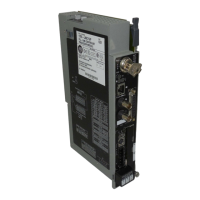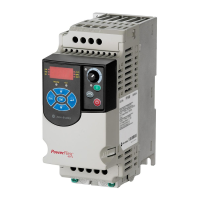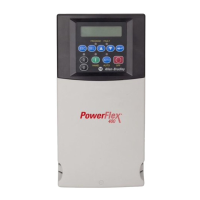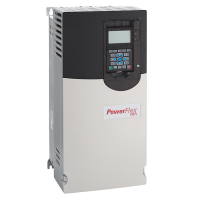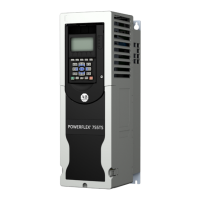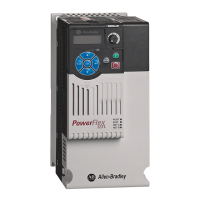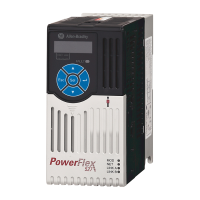Publication 1785-UM012D-EN-P - July 2005
Communicating with Extended-Local I/O 8-3
PLC-5/40L Controller with 16-rack Addressing Capability (Split Between
Extended-Local I/O and Remote I/O
)
The PLC-5 controller and the 1771-ALX adapter module automatically
allocate the next higher rack number(s) to the remaining I/O group(s) of the
chassis. For example, if you select 1/2-slot addressing for your
controller-resident local chassis and you are using a 16-slot (1771-A4B) chassis,
the controller will address racks 0, 1, 2, and 3 in this chassis.
When assigning a rack number to extended local I/O, follow these guidelines:
• Do not split a rack number between extended-local I/O and remote
I/O. For example, if you use a partial rack for remote I/O, you cannot
use the remaining partial rack for extended-local I/O. See ².
• You can distribute extended-local I/O racks across multiple chassis on
the extended-local I/O bus as shown below.
Extended-local I/O Rack Number Assigned to Multiple I/O Chassis
• You can select a different hardware addressing method for each
extended-local I/O chassis in your PLC-5 system.
0 1 2 3 7 11610
12 14
13 15
4 5
18584
16 17
Note: Racks numbers do not need to be consecutive per channel. For example, remote I/O
racks can be numbered 6, 7, 14, 15, 16, and 17, while extended-local I/O racks can be
numbered 4, 5, 10, 11, 12, and 13.
Remote I/O racks
Processor-resident local I/O racks Extended-local I/O racks
0 1 2 3
4
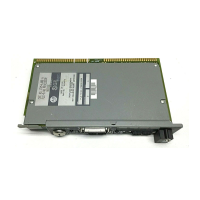
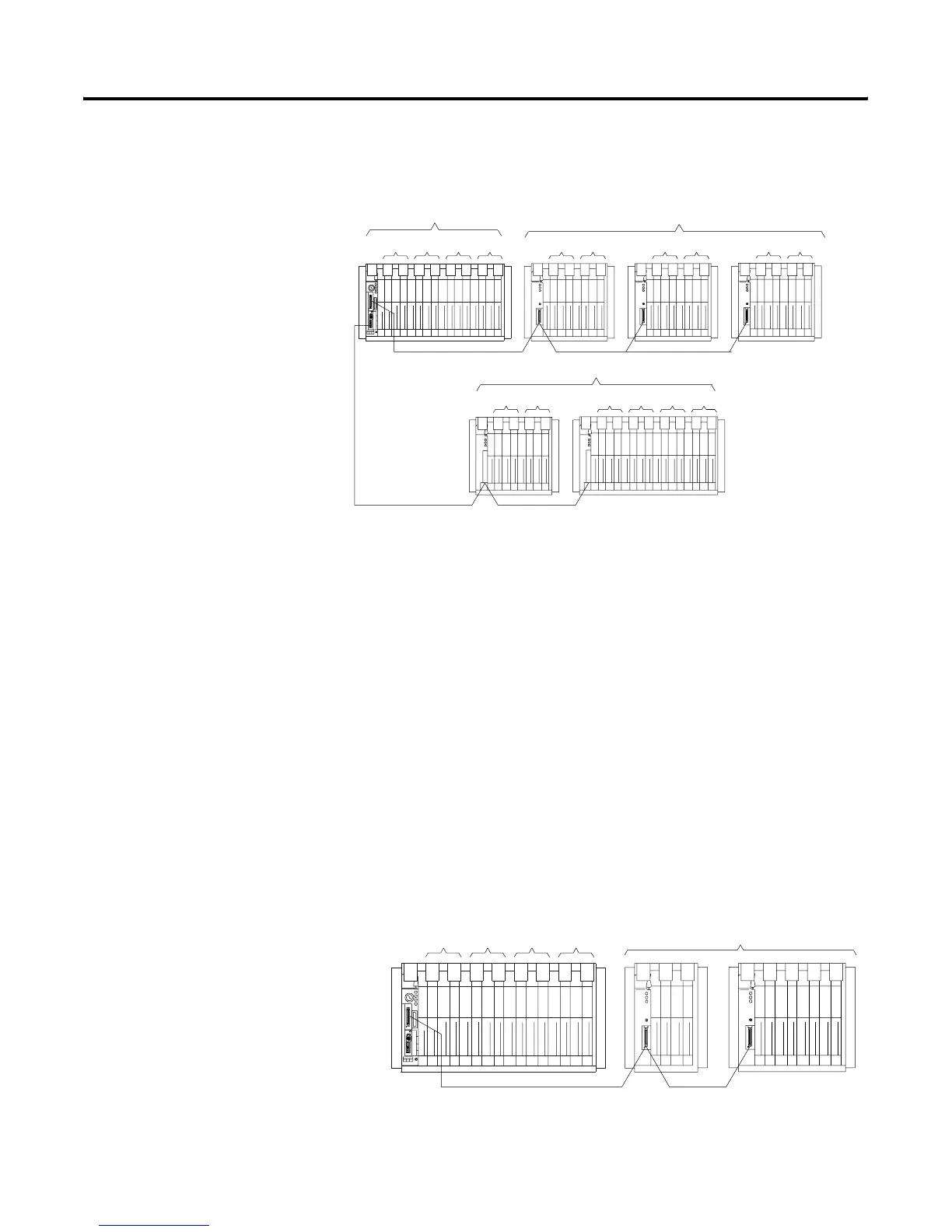